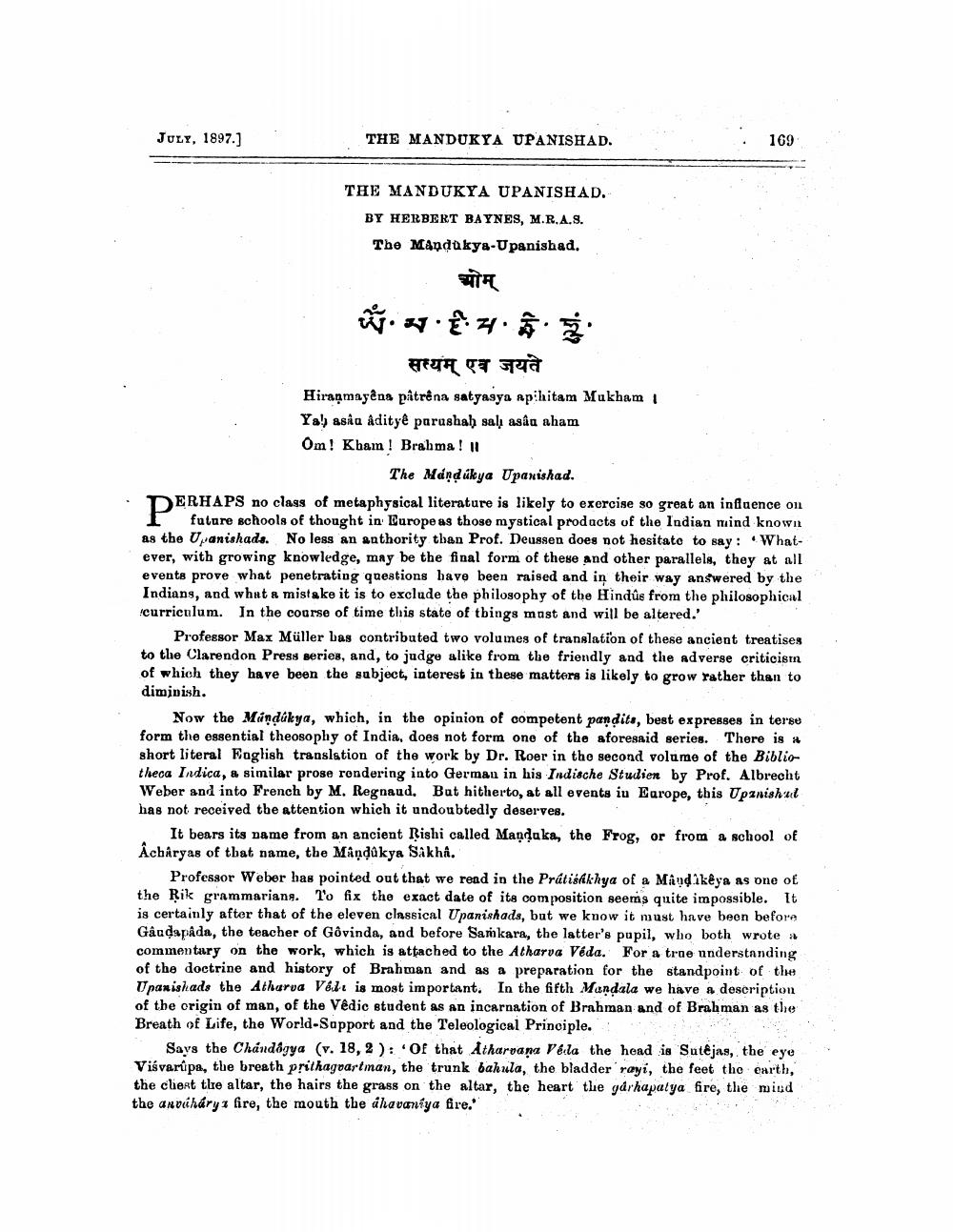________________
JULY, 1897.]
THE MANDUKYA UPANISHAD.
THE MANDUKYA UPANISHAD.
BY HERBERT BAYNES, M.R.A.S.
The Mandukya-Upanishad.
योम्
7
. Ž
w.v.
___ सत्यम् एव जयते Hiraşmayêna pâtrêna satyasya ap:hitam Mukham Yah aska adityê parashah salı asâa aham Om! Kham! Brahma ! !
The Mandúkya Upanishad. D ERHAPS no class of metaphysical literature is likely to exercise so great an influence on
I future schools of thought in Europe as those mystical products of the Indian nind known as the U, anishads. No less an authority than Prof. Deussen does not hesitate to say: Whatever, with growing knowledge, may be the final form of these and other parallely, they at all events prove what penetrating questions have been raised and in their way answered by the Indians, and what a mistake it is to exclude the philosophy of the Hindús from the philosophical curriculum. In the course of time this state of things must and will be altered.'
Professor Max Müller bas contributed two volumes of translation of these ancient treatises to the Clarendon Press series, and, to judge ulike from the friendly and the adverse criticisin of which they have been the subject, interest in these matters is likely to grow rather than to diminish.
Now the Mindúkya, which, in the opinion of competent pandits, best expresses in terse form the essential theosophy of India, does not form one of the aforesaid series. There is : short literal English translation of the work by Dr. Roer in the second volume of the Biblio theca Indica, a similar prose rondering into German in his Indische Studien by Prof. Albrecht Weber and into French by M. Regnaud. But hitherto, at all events in Europe, this Upanishat has not received the attention which it undoubtedly deserves.
It bears its name from an ancient Rishi called Mandaka, the Frog, or from a school of Acharyas of that name, the Mandukya Sakha.
Professor Weber has pointed out that we read in the Prátisakhya of a Mandikêya as one of the Rik grammariang. To fix the exact date of its composition seems quite impossible. It is certainly after that of the eleven classical Upanishads, but we know it must have been before Gaudspada, the teacher of Gôvinda, and before Sarkara, the latter's pupil, who both wrote a commentary on the work, which is attached to the Atharva Veda. For a true understanding of the doctrine and history of Brahman and as a preparation for the standpoint of the Upanishads the Atharva Valı is most important. In the fifth Mandala we have a description of the origin of man, of the Vedic student as an incarnation of Brahman and of Brahman as the Breath of Life, the World-Sapport and the Teleological Principle.
Save the Chándágya (v. 18, 2): Of that Atharvana Veila the head is Sutējas, the eye Visvarúpa, the breath prithagvart man, the trunk bahula, the bladder rayi, the feet the earth, the client the altar, the hairs the grass on the altar, the heart the yarhapalya fire, the mind the anvihárys fire, the mouth the dhavaniya fire."




